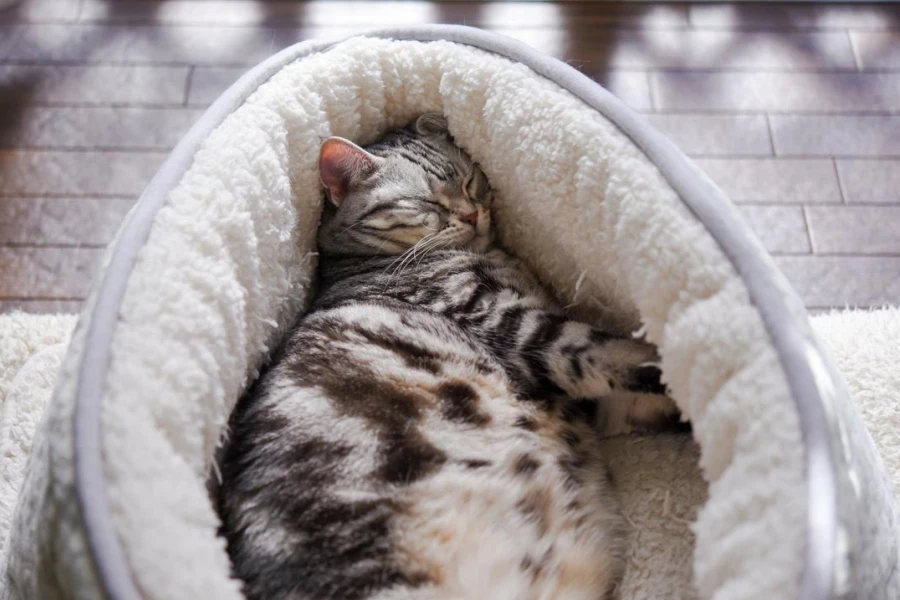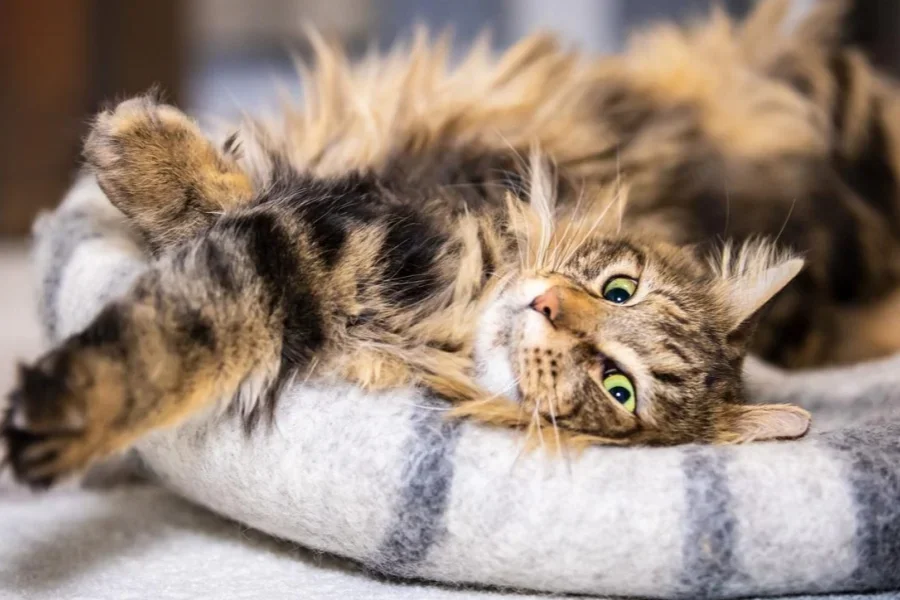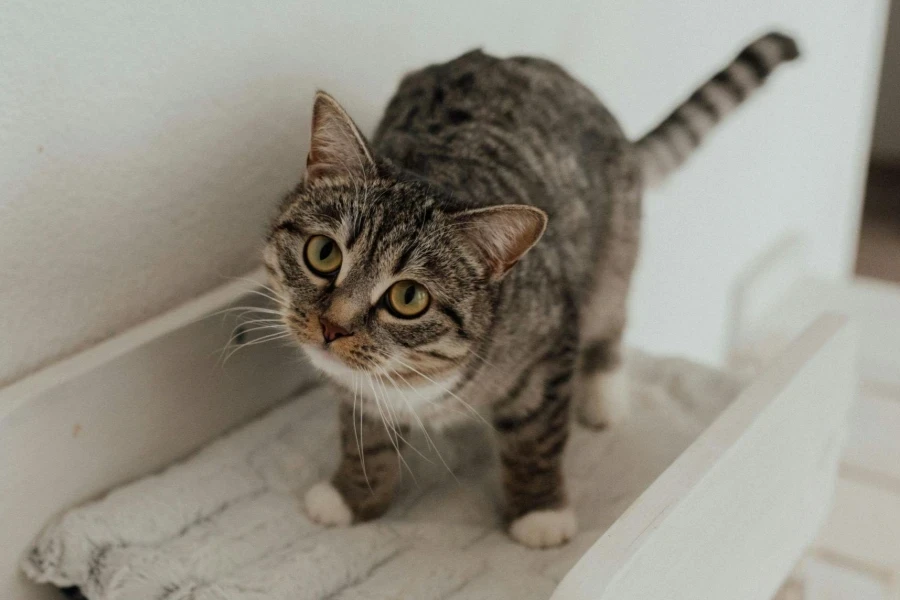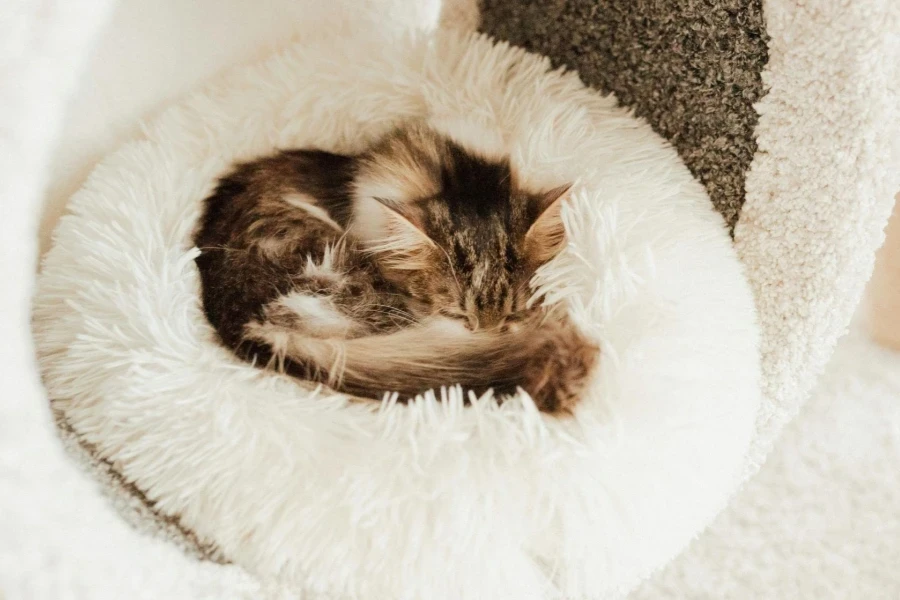
Cat beds have become an essential product in the pet industry, reflecting a growing recognition of their role in enhancing feline comfort and well-being. These products provide not only a dedicated space for rest but also cater to specific needs, such as joint support for older cats or warmth for those in cooler climates. With a variety of styles and materials available, from plush memory foam to self-warming fabrics, cat beds offer solutions that go beyond basic comfort, improving overall health and reducing stress in cats. Understanding the diverse options and their benefits is crucial for making informed decisions in this expanding market.
Table of Contents
● Exploring the main types of cat beds and their uses
● 2025 market trends: What’s shaping the cat bed industry?
● Key factors to consider when choosing cat beds
● Conclusion: Final thoughts on choosing cat beds
Exploring the main types of cat beds and their uses

Classic beds: Round, square, and bolster styles
Classic cat beds, including round, square, and bolster designs, remain popular for their simplicity and comfort. Round beds, resembling plush donuts, are ideal for cats that like to curl up, offering a sense of security. Square beds provide more space for cats that prefer to stretch out, while bolster beds feature raised edges that support the head and neck, making them suitable for older cats or those with joint issues. These styles are practical, often with removable, washable covers, and come in a variety of materials to fit different needs and budgets.
Specialty beds: Caves, tunnels, and window perches
Specialty cat beds like caves, tunnels, and window perches cater to specific feline preferences. Cave beds mimic natural hiding spots, offering a secure, enclosed space, ideal for shy or anxious cats. Tunnel beds combine play and rest, allowing cats to stalk and hide while also providing a cozy nap area. Window perches are designed for cats that enjoy observing the outdoors, offering a cushioned, elevated spot secured by sturdy brackets or suction cups. These innovative designs appeal to different cat behaviors and are particularly popular in urban areas with limited outdoor access.
Material choices: Plush, memory foam, and self-warming options
The material of a cat bed significantly impacts its comfort and function. Plush fabrics are soft and warm, making them ideal for colder climates or cats that enjoy cozy sleeping environments. Memory foam beds offer orthopedic support, contouring to a cat’s body and providing relief for older cats or those with arthritis. Self-warming beds, which reflect a cat’s body heat, are perfect for colder environments and short-haired breeds, offering a safe, low-maintenance alternative to electric heating. These diverse materials allow manufacturers to meet a variety of feline needs and preferences.
2025 market trends: What’s shaping the cat bed industry?

Rising demand for eco-friendly and sustainable materials
The cat bed market is increasingly embracing eco-friendly and sustainable materials, driven by growing consumer awareness of environmental responsibility. Materials like organic cotton, recycled fibers, and biodegradable components are becoming popular, reflecting broader trends in the pet industry toward healthier, eco-conscious living. Manufacturers are incorporating these materials into stylish, functional cat beds, often backed by certifications that validate their sustainability. As consumers prioritize eco-friendly products, the market for sustainable cat beds is expected to grow, offering a wider range of options for various preferences and budgets.
Increased focus on multi-functional designs
Multi-functional cat beds are gaining popularity as consumers seek products that offer more than just a place to rest. Beds with integrated tunnels, scratching surfaces, or play areas cater to cats’ natural behaviors while also saving space, especially in urban settings with smaller living spaces. These designs combine functionality with aesthetic appeal, allowing cat owners to choose beds that blend seamlessly with home décor. As space-efficient, versatile solutions become more sought after, manufacturers are expected to continue innovating in this area, balancing comfort with practical design.
Growth in personalized and custom cat bed offerings
Personalized cat beds are becoming a growing trend, as pet owners seek products that reflect their cats’ unique personalities and needs. Customizable options, like interchangeable covers, monogrammed features, and adjustable components, allow consumers to tailor beds to their preferences. Online platforms have made it easier to order custom designs, including size-specific beds to fit unique spaces or décor requirements. This trend of personalization, where cats are seen as family members, is expected to continue, with more options for tailored comfort and style emerging in the market.
Key factors to consider when choosing cat beds

Size and space requirements: Matching the bed to the cat’s needs
Choosing the right size cat bed is essential for the cat’s comfort and sense of security. Small breeds often prefer snug, enclosed beds, while larger cats need more space to stretch out. The bed’s size should accommodate the cat’s sleeping habits, whether it likes curling up or lying fully extended. The location of the bed also matters, as some cats prefer secluded spots while others enjoy open areas with a view. The bed should fit well within the home’s layout without overwhelming the space, blending with the existing décor.
Durability and maintenance: Easy-to-clean and long-lasting options
Durability is key when selecting a cat bed, especially in multi-cat homes or where the bed will be used frequently. Beds made from high-quality materials, reinforced stitching, and non-slip bases are more likely to withstand wear and tear, making them a better long-term investment. Easy-to-clean beds with removable, machine-washable covers help keep the bed fresh, reduce allergens, and maintain a healthier environment. Comfort and support: Importance of orthopedic and self-warming features
Comfort and support are crucial in cat beds, especially for older cats or those with health issues. Orthopedic beds, featuring memory foam, help relieve pressure points, making them ideal for cats with arthritis or joint pain. Self-warming beds, which reflect a cat’s body heat, offer extra warmth in cooler climates without the need for electricity. These features not only enhance comfort but also provide therapeutic benefits, ensuring that the cat feels safe, warm, and well-rested, making them an important factor in choosing the right bed.
Conclusion: Final thoughts on choosing cat beds

Selecting the right cat bed is a critical decision that can significantly enhance a cat’s comfort and overall well-being. Prioritizing key factors such as comfort, durability, and style ensures that the chosen product meets both the cat’s needs and the buyer’s preferences. From understanding the importance of proper sizing and material quality to recognizing the benefits of specialized designs, thoughtful selection can lead to improved sleep, reduced stress, and a happier, healthier cat. As the market evolves, staying informed about the latest trends and innovations will help in making choices that balance functionality with aesthetic appeal.




